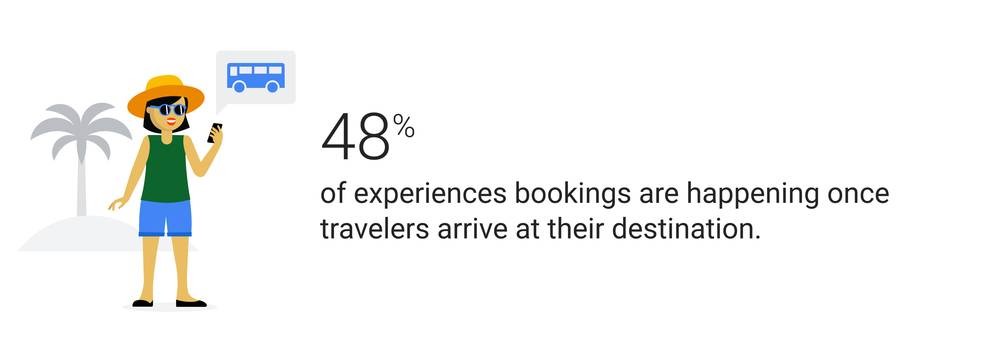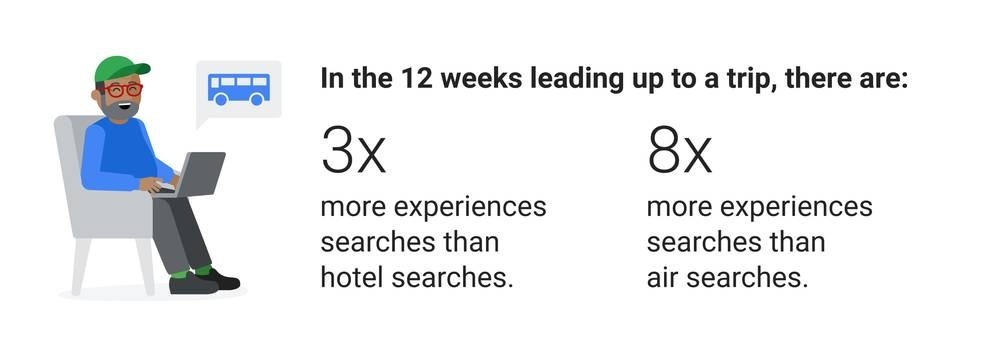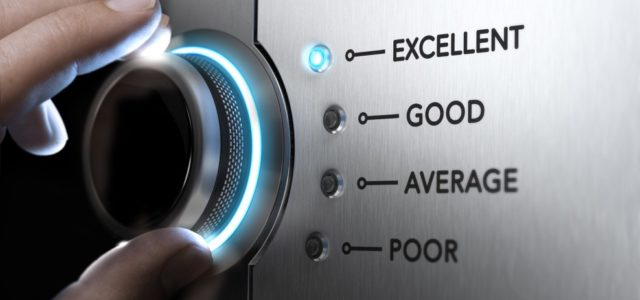As we approach the halfway point of 2019, I took time to reflect on the forty plus startups and established businesses in the tours and activities sector that I have had contact with this year and hopefully have helped.
After reading my notes and looking to identify trends, I identified what I believe to be a considerable weakness in the sector, which means if I am correct a significant opportunity for those with the ability to execute on this.
When you are in a bubble of growth as highlighted above it is easy to keep doing what you have always done. Tours and activity companies are not paying anywhere near enough attention to personalization. I believe personalization to be the primary driver of marketing success within a reasonable time frame of 2-5 years.
Currently, personalization in tours and activities is not here yet at any scale. However, it is coming fast, and those that execute on it will gain significant advantages. Rapid advances in data and analytics will allow tours and activities companies to become nearly as personal online as they are offline.
The customer journey online and offline can be merged and supported in a way that makes today’s customer experience look uncaring, uninteresting and process driven from the business point of view, not customer-centric.
As exciting as this is, I have found most startups and companies still very focused on traditional marketing and selling techniques and viewing personalization as something they will get around to down the line.
In other industry sectors personalization leaders have found proven ways to drive 5 to 15 % increases in revenue and 10 to 30 % increases in efficiency of marketing spend. Even at this early stage of development, this is achieved by simple product/service recommendations and triggered communications.
The T&A sector needs to understand the rapidly developing opportunity and threat personalization brings and improve the skills and ability to deploy.
So what are the drivers? Here are three.
1.Empathy Online And Offline
T&A operators are world class at empathy when we are face to face with our guests. Every day of the year, millions of guests are introduced to new, exciting, educational fantastic experiences by guides in a knowledgeable and empathetic manner.
Understanding others is hard even face to face, but it is when this is done well that the most influential relationships are created. In one word ” Trust” to do this online at scale is incredibly hard, but it is happening!
Algorithms are developed that interpret visual and auditory data. Yes, they will understand emotions! Your voice controlled device in the house will detect when you have a cold coming on and off course offer a solution to be purchased.
Will, they eventually recognize enough of our emotional signals to know the exact right moment to provide a weekend break suggestion or relaxing spa experience?
What if when you were having a video conference with some potential guests for your expensive multi-day adventure experience and complementing the signals, you are getting by just being human an algorithm is also running in the background that will understand facial expressions that will enable you to get feedback on interest, fear, joy, excitement and so on.
What do you think the impact on your conversion rate will be? Will you be able to use less experienced people to make the sales?
Emotions are super powerful. Tours and experiences are emotional. Anything that helps us understand potential guests emotions in the discovery phase is game-changing.
2. Travel Ecosystem Personalization Across Different Brands
Part of the spaghetti junction of today’s guest travel experience is different travel brands have an impact on the customer experience. We even have a technology industry that has grown up trying to simplify the customer journey due to multiple providers being involved. Flight, hotels, car rental, the experience provider all play a part, and it is a mess.
As much as the vast online land grab by the global travel technology companies to own the whole customer journey is impressive, the reality is that multiple players will always be involved in delivering the customer journey experience. Currently, each player only sees and impacts on their part of the customer journey, which results in disjointed customer experience.
Personalization will develop to the point where all those involved in delivering to the customer at any point will end up in an ecosystem designed around the customer. Connecting up these different providers and enabling them to understand the whole customer journey will result in massively increased customer quality experience and loyalty.
Example:
I book a flight and hotel in Orlando for a travel conference. I have booked the flight at the optimum price via voice as I was informed that the flight price will only increase going forward. The airline and the hotel and the conference organiser are in the same travel ecosystem so the airline will update them both if my flight is late.
My flight is not late, and as I clear security quickly enhanced by facial recognition, I walk out of the airport, and I am collected my hotel-branded autonomous car, which drives me to the hotel. Just before I reach the hotel, the vehicle communicates with the hotel and checks me in and speaks to the hotel doorman and provides my name.
The doorman welcomes me by name, and as I enter, I am greeted by a member of the hotel team with a welcome drink, of Irn Bru. They know I am addicted to it. She explains that my phone has my room key and guest service channel already loaded.
I proceed to my room, and it is laid out based on my previous history and music is playing based on my last selections. The minibar is stocked with what I drink, and the fruit and snacks are the ones that I eat. The conference organisers voice comes on to welcome me by name in an exceedingly personalized manner and run over the next morning’s itinerary and suggest some bars and restaurants that other attendees will be at this evening.
Is the above far fetched bullshit? Today yes but 3-5 years out?
3. Digitalization Online Will Merge With Offline Spaces.
Our greatest asset as T&A businesses are the people who work with the guests at the coalface. These servants of happiness are already brilliant at ensuring they make the customers experience the very best it can be.
However, we are shortchanging them because we could provide them with the tools that would take this service to a completely different level. This is a huge opportunity to impress and serve at the optimum time.
Guides and frontline staff who are provided with insights that are driven from advanced data analytics will become super guides! Hotels and lodges will start to use location and facial recognition. Biometric sensors will get deployed.
Hotel staff will have apps that alert them that they should recommend to customer Hank Marvin at breakfast, they try the haggis and black pudding. A Scottish delicacy as the data told them that customer Marvin was flying to Scotland next week on a golf tour. They would also mention that the golf driving range behind the hotel is free this evening for some practice and would he like them to book a slot.
Whilst at breakfast for Mrs Sunshine and family who part of the 48%. AR will be available for them to experience the two or three tours they are considering in advance of selecting which one they want to do.

All of the above is just marketing blah, blah if T&A operators do not start to think of personalisation in terms of how should we do our marketing instead of this can help us to do marketing.
Personalization is not a tactical tool; it is a strategic way of thinking and acting.
The data requirements backed up by analytics are beyond most small operators in the T&A space, but as always we can all watch and learn from the larger operators and eventually the technology required will become universal and affordable for all.
The technology investment and understanding to do this well should not be underestimated. IT and marketing need to work together as one to develop dashboards that are fed by algorithms and data that identify customers behaviours.
This is not just CRM. This requires the use of AI and machine learning working across data from multiple channels and connecting to various devices across the business.
Complex? Yes, very, as it includes new data such as voice and visual, but it will happen, and the ones that do it best will be the ones that make it most natural for customer-facing staff to use.
Personalization requires four elements to work together effectively:
1. Data foundation: Building a rich, 360-degree view of customers in real-time
2. Decisioning: Mining data to identify and act on signals along the consumer journey
3. Design: Crafting the right offers, messages, and experiences at speed
4. Distribution: Delivering and measuring these experiences across platforms and feeding new insights into the data foundation
The maximum value that can be gleaned from this model is driven by how each element works with the others. This already complex process is even more complicated in T&A as to get the most value we have to work and integrate with the whole customer journey meaning working across a partner eco-system. No one ever said, being in the T&A business was easy!
Below is opportunity unlimited for T&A operators but delivering on that opportunity will take digital leadership, knowledge, ability and critically collaboration to put the customer right at the centre of everything we do. It will not be easy!
If you have got this far thank you and I would more than welcome your thoughts and observations.
Regards
Pete
Article by channel:
Everything you need to know about Digital Transformation
The best articles, news and events direct to your inbox
Read more articles tagged: Customer Journey, Featured









